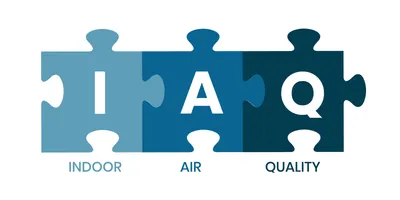UV222, a specific wavelength within the far-UVC band, is gaining traction as an emerging engineering control for airborne pathogens. Now, new peer-reviewed findings published in ACS ES&T Air show that the same technology may also reduce airborne protein allergens—materials that contribute to asthma, sensitization, and occupational allergy risk in many laboratory environments. The research team evaluated multiple common aeroallergens and measured how UV222 exposure affects immunodetection within respirable particles. These findings may influence how labs approach indoor air quality, allergen control, and engineering solutions for high-risk spaces.
Inside the controlled chamber study and detection methods
Unlike conventional 254-nm UV systems, which require shielding or unoccupied spaces, UV222 does not penetrate deeply into human skin or eyes. This makes it a candidate for continuous air treatment in occupied environments. Protein allergens strongly absorb far-UVC light, altering their structure and reducing antibodies' ability to recognize allergenic epitopes.
Researchers aerosolized dust-borne and purified allergens into a controlled 10-cubic-meter chamber, generating respirable particles measuring 10 micrometers or less. Using a six-jet Collison nebulizer, condensation-based aerosol capture, multiplex immunoassay quantification, and UV222 irradiation modeled at an average fluence of 10.2 microwatts per square centimeter, the team measured allergen levels at 10-minute intervals to determine the dose–response relationship. Baseline airborne allergen concentrations ranged from 50 to 200 nanograms per cubic meter—levels relevant to occupational sensitization thresholds in labs handling animals, molds, and environmental samples.
Dose-dependent allergen reductions at far-UVC wavelengths
Across all allergens tested—dust mites, animal dander, mold, birch, and grass—UV222 exposure produced measurable reductions in immunodetection. By the 30-minute mark, average decreases reached 25 percent for dust-borne allergens and 20 percent for purified allergens. Allergen reductions were observed at doses as low as 4.6 millijoules per square centimeter, well below American Conference of Governmental Industrial Hygienists exposure thresholds for skin and eyes.
The birch allergen Bet v 1 showed the greatest sensitivity to UV222, while Fel d 1 (cat allergen) showed the least change in mixed dust matrices. The study also noted that stabilizing agents in carrier aerosols may influence allergen resilience, suggesting that formulation and environmental factors can affect treatment outcomes.
UV222 systems can generate ozone depending on lamp design. In the chamber experiments, ozone levels rose by 60-80 parts per billion after one hour of operation. Under low-oxygen pilot conditions, allergen reductions persisted even when ozone formation was eliminated, suggesting ozone was not a confounding factor. However, labs implementing far-UVC may need to incorporate ozone monitoring depending on ventilation rates.
What the findings mean for laboratory indoor air quality programs
For laboratory managers, these findings highlight an emerging tool within indoor air quality programs. UV222 systems may complement existing controls such as HEPA filtration, humidity management, and allergen source reduction—particularly in animal facilities, mold-prone buildings, and other environments where airborne protein exposures pose occupational risks. While more research is needed to confirm clinical impact and performance in real-world lab settings, the data suggest that UV222 could become part of a multilayered allergen control strategy that improves working conditions and reduces sensitization risks in laboratory teams.
This article was created with the assistance of Generative AI and has undergone editorial review before publishing.












